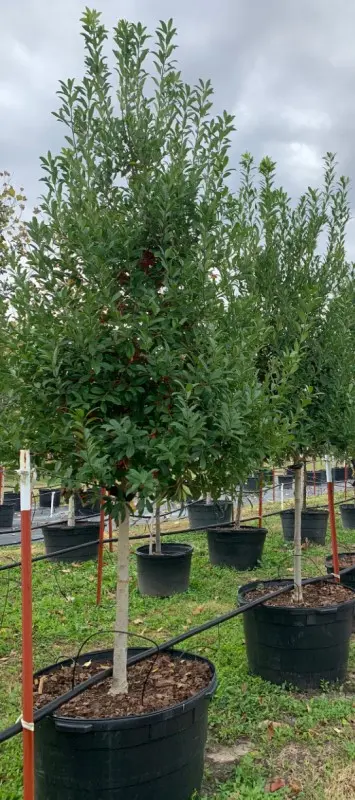-
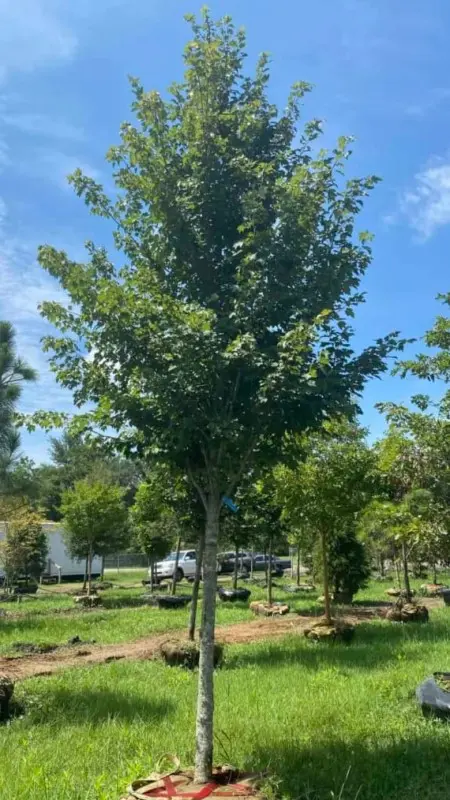
Red Maple
$0.00
Deciduous (loose leaves in winter)
Up to 50'
Grow up to 24" per year
-
Red Maple (Acer rubrum), also known as Swamp Maple or Soft Maple, is a popular deciduous tree admired for its vibrant fall color, versatile growth, and adaptability to various soil conditions. Native to North America, this tree is known for its brilliant red, orange, or yellow foliage in the autumn, as well as its red flowers, seeds, and twigs in early spring, which add subtle color even before the leaves emerge. Red Maples are often one of the first trees to change color in the fall, creating a striking seasonal display.
Red Maples typically grow to heights of 40 to 70 feet with a spread of 30 to 50 feet, making them ideal shade trees in residential and urban landscapes. They thrive in USDA zones 3-9 and adapt well to full sun or partial shade. While Red Maples are tolerant of a variety of soil types, including clay, loam, and sandy soils, they prefer slightly acidic, moist, and well-draining conditions. They can even tolerate occasional flooding, making them well-suited to wetland areas and low spots.
Low-maintenance by nature, Red Maples require minimal pruning to remove deadwood and shape the tree if needed, usually in late winter or early spring. Resistant to many pests and diseases, they are relatively easy to care for and can live for several decades with proper care.
With its rapid growth, striking seasonal color, and adaptability, the Red Maple is an excellent choice for adding year-round beauty, shade, and ecological value to the landscape. This tree brings structure and a dynamic color palette to both rural and urban settings, enhancing gardens, parks, and streetscapes alike.
-
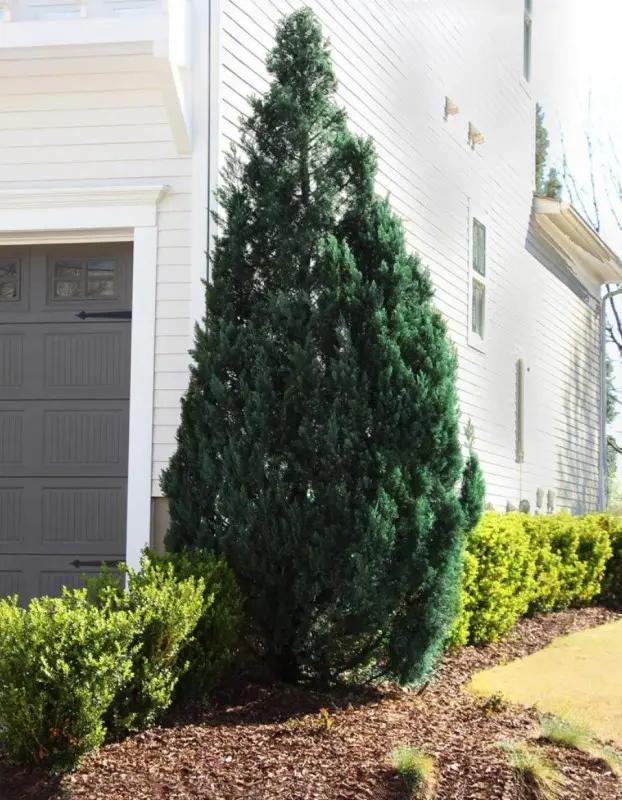
Blue Point Juniper
$0.00
Evergreen
Grow up to 12" per year
Up to 15'
Blue Point Juniper (Juniperus chinensis ‘Blue Point’) is a hardy, evergreen conifer known for its dense, conical shape and attractive silvery-blue foliage. This slow-growing juniper maintains a naturally symmetrical, upright form, making it an excellent choice for formal landscaping, topiary, or as a focal point. The fine, needle-like foliage retains its color year-round, creating visual interest and adding a pop of blue-green to the landscape.
Typically reaching heights of 8 to 12 feet and a spread of 3 to 4 feet, Blue Point Juniper is ideal for narrow spaces, small privacy screens, or mixed borders. It thrives in USDA zones 4-9 and performs best in full sun. This juniper is highly adaptable to various soil types, including sandy and clay soils, as long as they are well-draining. Once established, Blue Point Juniper is extremely drought-tolerant and resilient in hot, dry climates, making it a low-maintenance choice for xeriscape gardens and low-water landscapes.
Blue Point Juniper requires minimal pruning due to its naturally tidy shape but can be trimmed for more formal topiary styles or to control height. This tree is resistant to most pests and diseases and is generally unbothered by deer, adding to its appeal in various landscapes. With its elegant shape, vibrant color, and low maintenance needs, Blue Point Juniper is a versatile and attractive option for adding structure and year-round greenery to gardens, foundations, and entryways.
-
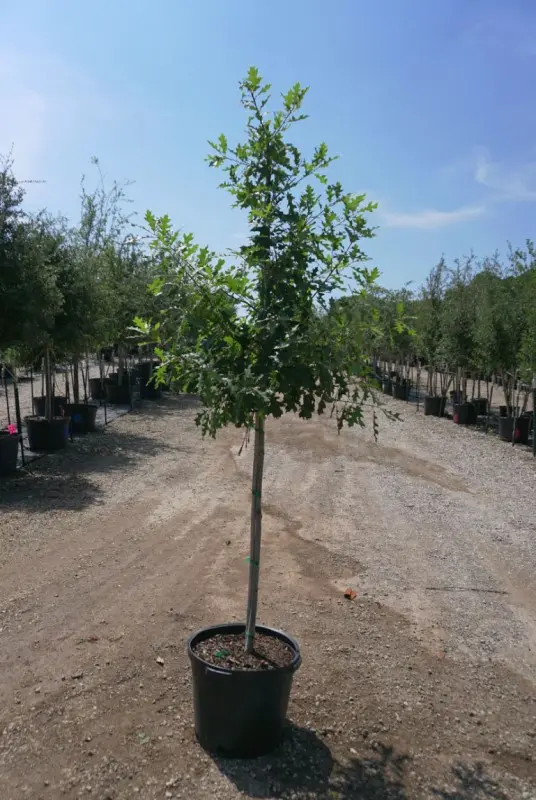
Bur Oak
$0.00
Evergreen
Grow up to 12" per year
Up to 70' tall
-
Bur Oak (Quercus macrocarpa), also known as Mossy Cup Oak, is a large, deciduous oak tree known for its thick, deeply furrowed bark, massive acorns, and impressive resilience. Native to North America, the Bur Oak can reach heights of 70 to 80 feet with a similar or slightly smaller spread, making it a grand, stately tree ideal for open landscapes. Its large, lobed leaves turn a golden yellow in the fall, adding seasonal interest, and its unique acorns—some of the largest of any oak—feature a fringed, “mossy” cap that provides an important food source for wildlife.
Bur Oaks thrive in USDA zones 3-8 and are well-suited to full sun and a variety of soil types, including clay, sandy, and loamy soils. They are especially tolerant of drought, pollution, and even poor soil, making them highly adaptable for urban environments and large open spaces. This tree’s deep, extensive root system enables it to withstand extreme conditions and contributes to its exceptional longevity, with many Bur Oaks living several hundred years.
Low-maintenance and pest-resistant, Bur Oaks require little care beyond occasional pruning in late winter to remove dead or damaged branches. Their robust structure and hardiness make them popular as shade trees in parks, golf courses, and expansive properties, where their large canopy provides cooling shade and creates a picturesque landscape. With its rugged bark, distinctive acorns, and adaptability, Bur Oak offers both ecological and aesthetic value, standing as a resilient, enduring presence in any landscape.
-
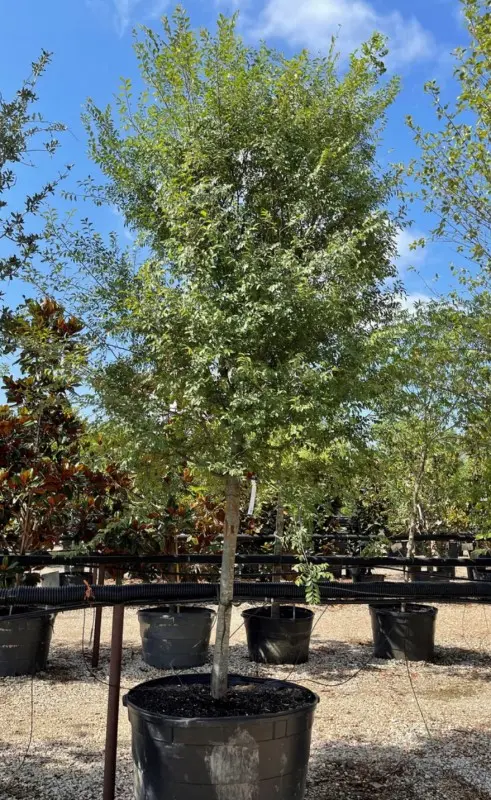
Elm Tree
$0.00
Deciduous (loose leave in winter)
Grows up to 24" per year
Up to 35'
Elm Tree (Ulmus spp.) is a large, deciduous tree admired for its graceful, vase-like shape, broad canopy, and resilience in urban and rural landscapes. Native to Europe, Asia, and North America, elms are known for their broad, serrated, dark green leaves that turn golden yellow in the fall, providing seasonal color and shade. The tree's mature bark is rugged and deeply fissured, adding texture and character to the landscape. Common varieties include the American Elm (Ulmus americana), the Chinese Elm (Ulmus parvifolia), and the English Elm (Ulmus procera).
Elms typically grow between 60 and 80 feet tall, with a spread of 40 to 70 feet, creating a broad, arching canopy that provides ample shade. They thrive in USDA zones 4-9, depending on the species, and adapt well to a variety of soil types, including clay, loamy, and sandy soils. Elms are best planted in full sun to partial shade and benefit from well-draining, moderately fertile soil, though they are moderately drought-tolerant once established. Known for their versatility, elms are often planted as shade trees in parks, along streets, and in large residential landscapes.
In recent years, elms have been bred for increased disease resistance, especially against Dutch Elm Disease, which affected many native elms in North America. Low-maintenance overall, elms require occasional pruning to remove dead or damaged branches and maintain airflow through the canopy. With their expansive, arching forms, vibrant fall colors, and adaptability, elm trees are a timeless choice for adding shade, beauty, and structure to diverse landscapes.

